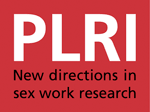Hong Kong
While the stigma surrounding sex work is both well documented and easily recognised, few studies examine stigma in this context from the perspective of the sex workers themselves. In this article we report on a study using a modified grounded theory approach to analyse a series of semi-structured interviews with 49 female sex workers in Hong Kong, in order to examine the ways in which this group experiences and negotiates the stigma which arises from their employment in the sex industry. Article in the Journal of Travel Medicine, 2011, Jan-Feb; 18(1): 1-7.

